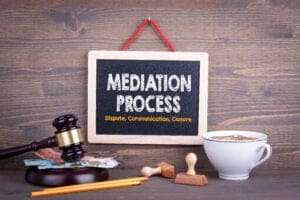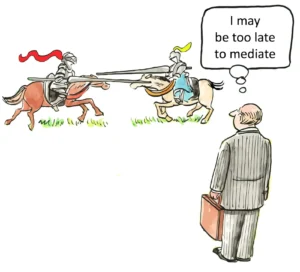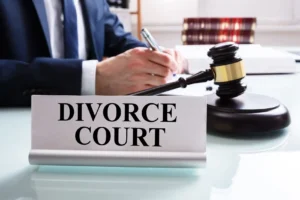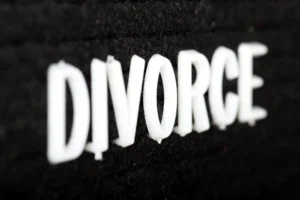Copyright Infringement: Protecting Your Work Online
In the digital age, copyright infringement has become an increasingly prevalent issue for creators and content owners. As the internet facilitates the rapid sharing and distribution of information, protecting intellectual property rights has grown more challenging. This article explores the legal landscape surrounding copyright infringement online, examining key concepts, recent developments, and strategies for safeguarding creative works in the digital realm.
Copyright law grants creators exclusive rights to their original works, including the right to reproduce, distribute, and display their creations. These protections extend to a wide range of media, from written text and images to music and software. In the online environment, where content can be easily copied and shared, understanding and enforcing these rights is crucial for creators and businesses alike.
The Digital Millennium Copyright Act (DMCA) of 1998 represents a significant piece of legislation addressing copyright issues in the digital age. This law introduced safe harbor provisions for online service providers, shielding them from liability for user-generated content under certain conditions. The DMCA also established a notice-and-takedown system, allowing copyright holders to request the removal of infringing content from websites and platforms.
One of the most notable copyright infringement cases in recent history involved the file-sharing platform Napster. In 2000, major record labels and artists sued Napster for facilitating the unauthorized distribution of copyrighted music. The case highlighted the tensions between emerging technologies and traditional copyright protections. Ultimately, Napster was found liable for contributory and vicarious copyright infringement, leading to its shutdown and significant changes in the digital music landscape.
The Napster case set a precedent for future litigation involving peer-to-peer file-sharing services and online platforms. It underscored the need for businesses to implement robust copyright compliance measures and demonstrated the willingness of courts to hold facilitators of infringement accountable. In the years following the Napster decision, numerous other file-sharing services faced similar legal challenges, reshaping the digital content distribution ecosystem.
As technology continues to evolve, new forms of copyright infringement have emerged. The rise of social media platforms has created novel challenges for copyright enforcement. Users frequently share copyrighted material without permission, often unaware of the legal implications. Platform operators have implemented various measures to address this issue, including content recognition systems and streamlined takedown procedures. However, the sheer volume of user-generated content makes comprehensive enforcement difficult.
The concept of fair use plays a crucial role in copyright law, particularly in the digital realm. Fair use allows for limited use of copyrighted material without permission for purposes such as criticism, commentary, news reporting, teaching, scholarship, or research. Determining whether a particular use qualifies as fair use involves considering factors such as the purpose and character of the use, the nature of the copyrighted work, the amount and substantiality of the portion used, and the effect on the potential market for the original work.
In the online context, fair use often comes into play with transformative works, such as remixes, memes, and parodies. These derivative creations can blur the lines between infringement and protected expression, leading to complex legal questions. Courts have grappled with applying fair use doctrine to digital content, resulting in sometimes inconsistent rulings. This uncertainty highlights the need for creators and users alike to carefully consider the legal implications of their online activities.
The global nature of the internet presents additional challenges for copyright enforcement. International copyright law varies significantly between jurisdictions, making it difficult to address infringement across borders. Efforts to harmonize copyright protections internationally, such as the Berne Convention and the Agreement on Trade-Related Aspects of Intellectual Property Rights (TRIPS), have made progress in establishing minimum standards. However, significant disparities remain in how different countries approach copyright issues, particularly in the digital realm.
One area of ongoing legal debate concerns the liability of online platforms for user-generated content. The safe harbor provisions of the DMCA provide a framework for addressing this issue in the United States, but their application has been the subject of numerous legal challenges. Platform operators must navigate a complex landscape of obligations, balancing the need to combat infringement with concerns about overreach and censorship.
The European Union has taken a different approach with the Copyright Directive, which includes controversial provisions such as Article 17 (formerly Article 13). This directive places greater responsibility on online platforms to prevent the upload of infringing content, potentially requiring the implementation of content filtering systems. Critics argue that such measures could stifle free expression and innovation, while supporters contend they are necessary to protect creators’ rights in the digital age.
As artificial intelligence and machine learning technologies advance, new questions arise regarding copyright protection for AI-generated works. The traditional concept of authorship, which assumes human creativity, may need to be reevaluated in light of increasingly sophisticated AI systems capable of producing original content. Legal systems worldwide are grappling with how to address these issues, balancing the need to incentivize innovation with the fundamental principles of copyright law.
For creators and content owners, protecting their work online requires a multifaceted approach. Digital Rights Management (DRM) technologies offer one means of safeguarding copyrighted material. DRM systems can control access to digital content, prevent unauthorized copying, and track usage. However, these technologies have faced criticism for potentially limiting legitimate uses and inconveniencing consumers.
Watermarking represents another strategy for protecting digital content. By embedding identifying information within images, videos, or audio files, creators can more easily track the use and distribution of their work. Visible watermarks can deter casual copying, while invisible watermarks can provide evidence of ownership in infringement cases. However, determined infringers may still find ways to remove or circumvent watermarks.
Education plays a crucial role in combating online copyright infringement. Many users inadvertently infringe copyrights due to a lack of understanding of intellectual property laws. Initiatives to raise awareness about copyright issues and promote responsible online behavior can help reduce unintentional infringement. Additionally, clear and accessible licensing options, such as Creative Commons licenses, can facilitate legal content sharing and reuse.
For businesses operating online, implementing a comprehensive copyright compliance program is essential. This may include regular audits of content, clear policies for addressing infringement claims, and staff training on copyright issues. Developing robust internal procedures for vetting user-generated content and responding to takedown notices can help mitigate legal risks and demonstrate good faith efforts to comply with copyright laws.
The rise of blockchain technology has sparked interest in new approaches to copyright protection and management. Blockchain-based systems could potentially provide a secure, transparent means of registering and tracking copyrights. Smart contracts built on blockchain platforms could automate licensing and royalty payments, streamlining the process of content monetization. While these applications are still in their early stages, they represent promising avenues for addressing longstanding challenges in copyright enforcement.
Recent years have seen an increase in copyright trolling, where entities aggressively pursue alleged infringers for financial gain, often through threatening legal action. This practice has raised concerns about the potential for abuse of copyright law and the chilling effect on online expression. Courts and policymakers have begun to address this issue, seeking to strike a balance between protecting legitimate copyright interests and preventing predatory enforcement tactics.
The orphan works problem presents another challenge in the digital copyright landscape. Orphan works are copyrighted materials whose owners cannot be identified or located, making it impossible to obtain permission for use. This issue has become more pronounced in the digital age, as vast amounts of content are digitized and made available online. Proposed solutions include creating limited liability provisions for users of orphan works and establishing databases to help locate copyright owners.
As the volume of online content continues to grow exponentially, automated copyright enforcement systems have become increasingly prevalent. Content ID systems, like those used by YouTube, automatically scan uploaded content for potential copyright infringement. While these systems can be effective in identifying clear cases of infringement, they may struggle with nuanced situations involving fair use or transformative works. Balancing the efficiency of automated systems with the need for human oversight and appeal processes remains an ongoing challenge.
The intersection of copyright law and freedom of expression is a contentious area, particularly in the digital realm. Overzealous copyright enforcement can potentially stifle free speech and creativity. Cases involving political speech, parody, and criticism have highlighted the need to carefully balance intellectual property rights with fundamental freedoms. Courts have generally recognized the importance of preserving space for transformative and commentary uses of copyrighted material, even as they uphold protections for creators.
The first sale doctrine, which allows the owner of a lawfully made copy to sell or dispose of that copy without the copyright owner’s permission, faces new challenges in the digital age. With the shift towards digital distribution and licensing models, questions arise about whether and how this doctrine applies to digital goods. Court decisions have varied on this issue, reflecting the complexity of applying traditional copyright concepts to new technological realities.
Open source software and open access publishing movements have emerged as alternative models for content creation and distribution. These approaches emphasize collaboration and free access to information, challenging traditional notions of copyright protection. While these models have gained significant traction in certain sectors, they coexist with more restrictive copyright regimes, creating a diverse ecosystem of content creation and sharing.
The growing popularity of non-fungible tokens (NFTs) has introduced new questions about the intersection of copyright and digital ownership. NFTs, which use blockchain technology to create unique digital assets, have been used to sell digital art, music, and other forms of content. However, the relationship between owning an NFT and holding the copyright to the underlying work remains complex and often misunderstood. Clarifying the legal status of NFTs and their implications for copyright law will be an important task for courts and legislators in the coming years.
As virtual and augmented reality technologies advance, new copyright challenges emerge. Virtual worlds and immersive digital experiences raise questions about the ownership and protection of user-generated content within these environments. The potential for users to create and share copyrighted material in novel ways may require adaptations to existing legal frameworks.
The right of publicity, which protects individuals’ control over the commercial use of their likeness, intersects with copyright law in complex ways online. Social media platforms and content creators must navigate the boundaries between fair use of public figures’ images and potential infringement of publicity rights. This area of law continues to evolve as new forms of digital media and celebrity emerge.
Geoblocking, the practice of restricting access to online content based on geographical location, has become a contentious issue in copyright law. While content owners often use geoblocking to comply with licensing agreements and regional copyright restrictions, critics argue that it undermines the global nature of the internet and can lead to unequal access to information and cultural works.
The Digital Rights Management Information (DRMI) provisions of the DMCA prohibit the removal or alteration of copyright management information. These provisions aim to maintain the integrity of copyright notices and other identifying information associated with digital works. However, the application of DRMI protections in the online environment has been the subject of legal debate, particularly in cases involving the reposting or sharing of content on social media platforms.
As the legal landscape surrounding online copyright infringement continues to evolve, creators, businesses, and users must stay informed about their rights and responsibilities. Effective protection of intellectual property in the digital age requires a combination of legal, technological, and educational approaches. By understanding the complexities of copyright law and adopting proactive strategies, stakeholders can navigate the challenges of the digital realm while fostering innovation and creativity.
Website citations:
- https://www.copyright.gov/help/faq/faq-fairuse.html
- https://www.copyright.gov/fair-use/fair-index.html
- https://www.americanbar.org/groups/litigation/resources/newsletters/business-torts-unfair-competition/keyword-advertising-trademark-infringement/
- https://www.techdirt.com/2013/07/19/once-again-buying-competitive-keywords-is-not-trademark-infringement/
- https://www.scoredetect.com/blog/posts/legal-aspects-of-copyright-for-online-content
- https://www.freedomforum.org/famous-copyright-cases/
- https://www.americanbar.org/groups/communications_law/publications/communications_lawyer/2025-winter/generative-ai-copyright-law-current-trends/
- https://guides.lib.utexas.edu/copyright/contentweb
- https://www.mofo.com/resources/insights/250131-ai-trends-for-2025-copyright-law-s-impact
- https://www.worldipreview.com/copyright/can-viral-social-media-trends-be-protected-under-ip-law
- https://www.dlapiper.com/en-us/insights/publications/2025/01/mark-it-6-big-trademark-copyright-and-advertising-trends-we-are-watching-for-2025
- https://natlawreview.com/article/second-circuit-mere-purchase-search-engine-keyword-ad-competitors-trademark-not
- https://www.bipc.com/trademarks-and-keyword-advertising-courts-rule-no-infringement-in-buying-competitor-marks
- https://www.scoredetect.com/blog/posts/seo-and-copyright-protect-content-avoid-penalties













